Submitted:
01 July 2024
Posted:
03 July 2024
You are already at the latest version
Abstract
Keywords:
1. Introduction
1.1. Forage Fish in Human Nutrition
1.2. Global Forage Fish Catch and Its Reduction to Fishmeal ("the Practice")
1.3. The Impact of "the Practice" on Social Sectors: A Matter of Both Profit and Deprivation
- We can learn from the documented situation in certain African countries, where demand for small fish is strong among low-income communities [53]. Nevertheless, the industry's and exporters' economic leverage allows them to buy much of the catch. Proactive attention by relevant authorities and organizations to the population's interest could considerably increase the direct human consumption of forage fish in such countries and elsewhere.
- In the past, low demand for anchovy in Peruvian and other markets could be attributed to this fragile fish's poor quality, which deteriorates quickly under inadequate storage and sanitary conditions on unrefrigerated boats supplying the local markets [19,42]. Additionally, Peru's fishery has offered larger, widely available species, such as mackerels and bonito (Figure 4 and Figure 5), which are less affordable but more versatile and palatable from a culinary standpoint; yet many Peruvian households cannot afford them and would purchase high-quality anchovy [38,42,46], which has historically been a crucial protein source in Peru and has played a significant role in ensuring food security since ancient Andean civilizations [31,49,54].
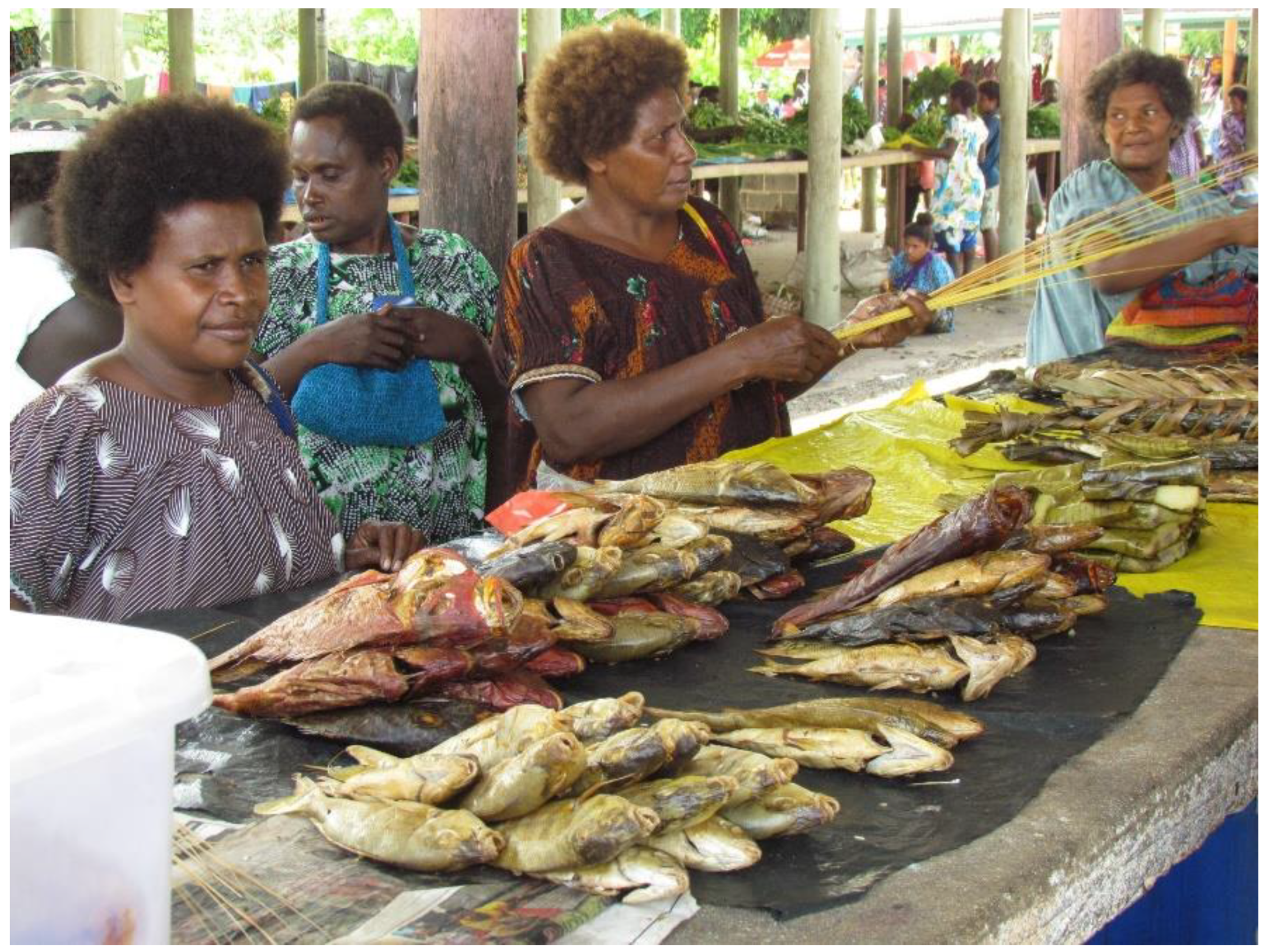
1.4. Socioeconomic Impact- Social Sectors Worsened by "the Practice"
1.4.1. Food Fish or Fish Feed?
1.4.2. Impact of "the Practice" on Artisanal Fishermen and Others
1.4. The Forage Fish Market and Its Response to "the Practice"
2. Forage Fish Supply and Prices in the Fresh Fish Markets: Quantification of the Socioeconomic Impact of "the Practice"
2.1. The Global Forage Fish Market
2.2. Estimating the Quantitative Impact of "the Practice" on Fresh Forage Fish Price and Consumption
2.3. Country Case Studies
2.3.1. South Africa
2.3.2. Senegal
2.3.3. Istanbul, Turkey
2.3.4. Peru
2.3.4.1. Forage fish
2.3.4.2. Mackerel (Representing Piscivorous Fish in Peru)
4. Discussion
4.1. Country Case Studies
4.1.1. South Africa
4.1.2. Senegal
4.1.3. Istanbul, Turkey
4.1.4. Peru
5. Conclusions
Funding
Data Availability Statement
Acknowledgments
Conflicts of Interest
References
- Duarte, L.O.; Garcı́a, C.B. Trophic Role of Small Pelagic Fishes in a Tropical Upwelling Ecosystem. Ecol. Model., 2004, 172, 323–338. [Google Scholar] [CrossRef]
- Alder, J.; Campbell, B.; Karpouzi, V.; Kaschner, K.; Pauly, D. Forage Fish: From Ecosystems to Markets. Annu. Rev. Environ. Resour., 2008, 33, 153–166. [Google Scholar] [CrossRef]
- Smith, A.D.M.; Brown, C.J.; Bulman, C.M.; Fulton, E.A.; Johnson, P.; Kaplan, I.C.; Lozano-Montes, H.; Mackinson, S.; Marzloff, M.; Shannon, L.J.; Shin, Y.-J.; Tam, J. Impacts of Fishing Low–Trophic Level Species on Marine Ecosystems. Science, 2011, 333, 1147–1150. [Google Scholar] [CrossRef] [PubMed]
- Alheit, J.; Peck, M.A. Drivers of Dynamics of Small Pelagic Fish Resources: Biology, Management and Human Factors. Mar. Ecol. Prog. Ser., 2019, 617–618, 1–6. [Google Scholar] [CrossRef]
- Wijkström, U.N. The Use of Wild Fish as Aquaculture Feed and Its Effects on Income and Food for the Poor and the Undernourished. In Fish as feed inputs for aquaculture: practices, sustainability and implications; Hasan, M.R.; Halwart, M., Eds.; Fisheries and Aquaculture Technical Paper; FAO,Rome, 2009; pp. 371–407.
- Muringai, R.T.; Mafongoya, P.; Lottering, R.T.; Mugandani, R.; Naidoo, D. Unlocking the Potential of Fish to Improve Food and Nutrition Security in Sub-Saharan Africa. Sustainability, 2022, 14, 318. [Google Scholar] [CrossRef]
- Robinson, J.P.W.; Mills, D.J.; Asiedu, G.A.; Byrd, K.; Mancha Cisneros, M. del M.; Cohen, P.J.; Fiorella, K.J.; Graham, N.A.J.; MacNeil, M.A.; Maire, E.; Mbaru, E.K.; Nico, G.; Omukoto, J.O.; Simmance, F.; Hicks, C.C. Small Pelagic Fish Supply Abundant and Affordable Micronutrients to Low- and Middle-Income Countries. Nat. Food, 2022, 3, 1075–1084. [Google Scholar] [CrossRef] [PubMed]
- Aksnes, D.L.; Holm, P.; Bavinck, M.; Biermann, F.; Donovaro, R.; Harvey, P.; Hynes, S.; Ingram, J.; Kaiser, M.; Kaushik, S.; Krause, G. Food from the Oceans: How Can More Food and Biomass Be Obtained from the Oceans in a Way That Does Not Deprive Future Generations of Their Benefits? Evidence Review Report 1; SAPEA, Science Advice for Policy by European Academics: Berlin, 2017; p. 160. [Google Scholar]
- Brækkan, E.H. Disentangling Supply and Demand Shifts: The Impacts on World Salmon Price. Appl. Econ., 2014, 46, 3942–3953. [Google Scholar] [CrossRef]
- Belton, B.; Bush, S.; Little, D. Not Just for the Wealthy: Rethinking Farmed Fish Consumption in the Global South. Glob. Food Secur., 2017, 16. [Google Scholar] [CrossRef]
- Deutsch, L.; Gräslund, S.; Folke, C.; Troell, M; Huitric, M. ; Kautsky, N.; Lebel, L. Feeding Aquaculture Growth through Globalization: Exploitation of Marine Ecosystems for Fishmeal. Glob. Environ. Change, 2007, 17, 238–249. [Google Scholar] [CrossRef]
- Tidwell, J.H.; Allan, G.L. Fish as Food: Aquaculture’s Contribution. EMBO Rep.
- Konar, M.; Qiu, S.; Tougher, B.; Vause, J.; Tlusty, M.; Fitzsimmons, K.; Barrows, R.; Cao, L. Illustrating the Hidden Economic, Social and Ecological Values of Global Forage Fish Resources. Resour. Conserv. Recycl., 2019, 151, 104456. [Google Scholar] [CrossRef]
- Pikitch, E.K.; Rountos, K.J.; Essington, T.E.; Santora, C.; Pauly, D.; Watson, R.; Sumaila, U.R.; Boersma, P.D.; Boyd, I.L.; Conover, D.O.; Cury, P.; Heppell, S.S.; Houde, E.D.; Mangel, M.; Plagányi, É.; Sainsbury, K.; Steneck, R.S.; Geers, T.M.; Gownaris, N.; Munch, S.B. The Global Contribution of Forage Fish to Marine Fisheries and Ecosystems. Fish Fish., 2014, 15, 43–64. [Google Scholar] [CrossRef]
- Avadí, A.; Fréon, P. A Set of Sustainability Performance Indicators for Seafood: Direct Human Consumption Products from Peruvian Anchoveta Fisheries and Freshwater Aquaculture. Ecol Ind, 2015, 147, 518–553. [Google Scholar] [CrossRef]
- Pomeroy, R.; Parks, J.; Mrakovcich, K.L.; LaMonica, C. Drivers and Impacts of Fisheries Scarcity, Competition, and Conflict on Maritime Security. Mar. Policy, 2016, 67, 94–104. [Google Scholar] [CrossRef]
- Belton, B.; Little, D.C.; Zhang, W.; Edwards, P.; Skladany, M.; Thilsted, S.H. Farming Fish in the Sea Will Not Nourish the World. Nat. Commun., 2020, 11, 5804. [Google Scholar] [CrossRef]
- Peng, D.; Mu, Y.; Zhu, Y.; Chu, J.; Sumaila, U.R. Insights from Chinese Mariculture Development to Support Global Blue Growth. Rev. Fish. Sci. Aquac., 2023, 31, 453–457. [Google Scholar] [CrossRef]
- Avadí, A.; Fréon, P.; Tam, J. Coupled Ecosystem/Supply Chain Modelling of Fish Products from Sea to Shelf: The Peruvian Anchoveta Case. PLoS ONE, 2014, 9, e102057. [Google Scholar] [CrossRef] [PubMed]
- Hilborn, R.; Buratti, C.C.; Díaz Acuña, E.; Hively, D.; Kolding, J.; Kurota, H.; Baker, N.; Mace, P.M.; de Moor, C.L.; Muko, S.; Osio, G.C.; Parma, A.M.; Quiroz, J.-C.; Melnychuk, M.C. Recent Trends in Abundance and Fishing Pressure of Agency-Assessed Small Pelagic Fish Stocks. Fish Fish., 2022, 23, 1313–1331. [Google Scholar] [CrossRef]
- Essington, T.E.; Moriarty, P.E.; Froehlich, H.E.; Hodgson, E.E.; Koehn, L.E.; Oken, K.L.; Siple, M.C.; Stawitz, C.C. Fishing Amplifies Forage Fish Population Collapses. Proc. Natl. Acad. Sci., 2015, 112, 6648–6652. [Google Scholar] [CrossRef] [PubMed]
- Naylor, R.L.; Hardy, R.W.; Buschmann, A.H.; Bush, S.R.; Cao, L.; Klinger, D.H.; Little, D.C.; Lubchenco, J.; Shumway, S.E.; Troell, M. A 20-Year Retrospective Review of Global Aquaculture. Nature, 2021, 591, 551–563. [Google Scholar] [CrossRef]
- Krause, G.; Brugere, C.; Diedrich, A.; Ebeling, M.W.; Ferse, S.C.A.; Mikkelsen, E.; Pérez Agúndez, J.A.; Stead, S.M.; Stybel, N.; Troell, M. A Revolution without People? Closing the People–Policy Gap in Aquaculture Development. Aquaculture, 2015, 447, 44–55. [Google Scholar] [CrossRef]
- FAO. The State of World Fisheries and Aquaculture 2018 (SOFIA), 2018.
- Campbell, L.M.; Fairbanks, L.; Murray, G.; Stoll, J.S.; D´Anna, L.; Bingham, J. From Blue Economy to Blue Communities: Reorienting Aquaculture Expansion for Community Wellbeing. Mar. Policy, 2021, 124, 104361. [Google Scholar] [CrossRef]
- Brugere, C.; Bansal, T.; Kruijssen, F.; Williams, M. Humanizing Aquaculture Development: Putting Social and Human Concerns at the Center of Future Aquaculture Development. J. World Aquac. Soc., 2023, 54, 482–526. [Google Scholar] [CrossRef]
- Kawarazuka, N.; Béné, C. The Potential Role of Small Fish Species in Improving Micronutrient Deficiencies in Developing Countries: Building Evidence. Public Health Nutr., 2011, 14, 1927–1938. [Google Scholar] [CrossRef] [PubMed]
- Sprague, M.; Dick, J.R.; Tocher, D.R. Impact of Sustainable Feeds on Omega-3 Long-Chain Fatty Acid Levels in Farmed Atlantic Salmon, 2006–2015. Sci. Rep., 2016, 6, 21892. [Google Scholar] [CrossRef]
- Shannon, L.; Waller, L. A Cursory Look at the Fishmeal/Oil Industry From an Ecosystem Perspective. Front. Ecol. Evol., 2021, 9. [Google Scholar] [CrossRef]
- Arthur, R.I.; Skerritt, D.J.; Schuhbauer, A.; Ebrahim, N.; Friend, R.M.; Sumaila, U.R. Small-Scale Fisheries and Local Food Systems: Transformations, Threats and Opportunities. Fish Fish., 2022, 23, 109–124. [Google Scholar] [CrossRef]
- Majluf, P.; De la Puente, S.; Christensen, V. The Little Fish That Can Feed the World. Fish Fish., 2015, 18, 772–777. [Google Scholar] [CrossRef]
- Roos, N.; Wahab, M.A.; Chamnan, C.; Thilsted, S.H. The Role of Fish in Food-Based Strategies to Combat Vitamin A and Mineral Deficiencies in Developing Countries. J. Nutr., 2007, 137, 1106–1109. [Google Scholar] [CrossRef]
- Yildiz, T.; Ulman, A.; Karakulak, F.S.; Uzer, U.; Demirel, N. Bio-Economic Indicators of Fisheries: Impact of Variations in Landings and Fish Size on Market Prices in Istanbul Fish Market. PeerJ, 2023, 11, e15141. [Google Scholar] [CrossRef]
- Bosch, A.C.; O’Neill, B.; Sigge, G.O.; Kerwath, S.E.; Hoffman, L.C. Heavy Metal Accumulation and Toxicity in Smoothhound (Mustelus Mustelus) Shark from Langebaan Lagoon, South Africa. Food Chem., 2016, 190, 871–878. [Google Scholar] [CrossRef]
- Tacon, A.G.J. Contribution of Fish and Seafood to Global Food and Feed Supply: An Analysis of the FAO Food Balance Sheet for 2019. Rev. Fish. Sci. Aquac., 2023, 31, 274–283. [Google Scholar] [CrossRef]
- Ghamkhar, R.; Hicks, A. Comparative Environmental Impact Assessment of Aquafeed Production: Sustainability Implications of Forage Fish Meal and Oil Free Diets. Resour. Conserv. Recycl., 2020, 161, 104849. [Google Scholar] [CrossRef]
- D’Abramo, L.R. Sustainable Aquafeed and Aquaculture Production Systems as Impacted by Challenges of Global Food Security and Climate Change. J. World Aquac. Soc., 2021, 52, 1162–1167. [Google Scholar] [CrossRef]
- FAO. The State of World Fisheries and Aquaculture 2022, 2022.
- Galkanda-Arachchige, H.S.C.; Wilson, A.E.; Davis, D.A. Success of Fishmeal Replacement through Poultry By-Product Meal in Aquaculture Feed Formulations: A Meta-Analysis. Rev. Aquac., 2020, 12, 1624–1636. [Google Scholar] [CrossRef]
- Edwards, P. Aquaculture Environment Interactions: Past, Present and Likely Future Trends. Aquaculture, 2015, 447, 2–14. [Google Scholar] [CrossRef]
- Neori, A. “Green Water” Microalgae: The Leading Sector in World Aquaculture. J. Appl. Phycol., 2011, 23, 143–149. [Google Scholar] [CrossRef]
- Fréon, P.; Sueiro, J.C.; Iriarte, F.; Miro Evar, O.F.; Landa, Y.; Mittaine, J.-F.; Bouchon, M. Harvesting for Food versus Feed: A Review of Peruvian Fisheries in a Global Context. Rev. Fish Biol. Fish., 2014, 24, 381–398. [Google Scholar] [CrossRef]
- Derichs, C. Small Pelagic Fisheries; 1; Briefing; Marine Stewardship Council (MSC): London, 2021; p. 20. [Google Scholar]
- The Fortune Business Insights. Aquafeed Market Size, Share, Growth, Industry Analysis https://www.fortunebusinessinsights.com/industry-reports/aquafeed-market-100698 (accessed Jun 6, 2024).
- Tacon, A.G.J.; Metian, M. Food Matters: Fish, Income, and Food Supply—A Comparative Analysis. Rev. Fish. Sci. Aquac., 2018, 26, 15–28. [Google Scholar] [CrossRef]
- IFFO -The Marine Ingredients Organization. New IFFO Position: Fish as Food or Feed - 14, 2019. 20 September.
- Bronnmann, J.; Smith, M.D.; Abbott, J.; Hay, C.J.; Naesje, T.F. Integration of a Local Fish Market in Namibia with the Global Seafood Trade: Implications for Fish Traders and Sustainability. World Dev., 2020, 135, 105048. [Google Scholar] [CrossRef]
- Teh, L.; Teh, L.C.L.; Sumaila, U.R. Global Fisheries : Livelihood Impacts of Overfishing: 22; Fisheries Centre Research Reports; Technical Report Volume #31 Number #2; Institute for the Oceans and Fisheries, The University of British Columbia, Canada, 2023; p. 51. 20 November.
- Christensen, V.; de la Puente, S.; Sueiro, J.C.; Steenbeek, J.; Majluf, P. Valuing Seafood: The Peruvian Fisheries Sector. Mar. Policy, 2014, 44, 302–311. [Google Scholar] [CrossRef]
- Tacon, A.G.J. Use of Fish Meal and Fish Oil in Aquaculture: A Global Perspective. CAB Rev., 2004, 1, 3–14. [Google Scholar]
- Malcorps, W.; Kok, B.; van‘t Land, M.; Fritz, M.; van Doren, D.; Servin, K.; van der Heijden, P.; Palmer, R.; Auchterlonie, N.A.; Rietkerk, M.; Santos, M.J.; Davies, S.J. The Sustainability Conundrum of Fishmeal Substitution by Plant Ingredients in Shrimp Feeds. Sustainability, 2019, 11, 1212. [Google Scholar] [CrossRef]
- Allan, Geoff. Fish for Feed vs Fish for Food. In Fish, Aquaculture, and Food Security: Sustaining Fish as a Food Supply; A.G. Brown, Ed.; the Crawford Fund for International Agricultural Research: Canberra, Australia, 2004; pp. 20–26. [Google Scholar]
- Hecht, T. Regional Review on Aquaculture Development. 4. Sub-Saharan Africa - 2005.; 2006.
- Vizurraga, A. Peru’s Fishmeal Industry: Its Societal and Environmental Impact. Thesis, City University of New York (CUNY), 2022.
- Nissar, S.; Bakhtiyar, Y.; Arafat, M.Y.; Andrabi, S.; Bhat, A.A.; Yousuf, T. A Review of the Ecosystem Services Provided by the Marine Forage Fish. Hydrobiologia, 2023, 850, 2871–2902. [Google Scholar] [CrossRef]
- Hasan, M.R.; Halwart, M. Fish as Feed Inputs for Aquaculture: Practices, Sustainability and Implications; FAO Fisheries and Aquaculture Technical Papers; FAO: Food and Agriculture Organization of the United Nations: Rome, 2009. [Google Scholar]
- Hecht, T.; Jones, C. “Use of Wild Fish and Other Aquatic Organisms as Feed in Aquaculture - A Review of Practices and Implications in Africa and the Near East.” Fish Feed Inputs Aquac. Pract. Sustain. Implic., 2009.
- Naylor, R.L.; Hardy, R.W.; Bureau, D.P.; Chiu, A.; Elliott, M.; Farrell, A.P.; Forster, I.; Gatlin, D.M.; Goldburg, R.J.; Hua, K.; Nichols, P.D. Feeding Aquaculture in an Era of Finite Resources. Proc. Natl. Acad. Sci., 2009, 106, 15103–15110. [Google Scholar] [CrossRef] [PubMed]
- Schindler, D.E.; Hilborn, R.; Chasco, B.; Boatright, C.P.; Quinn, T.P.; Rogers, L.A.; Webster, M.S. Population Diversity and the Portfolio Effect in an Exploited Species. Nature, 2010, 465, 609–612. [Google Scholar] [CrossRef] [PubMed]
- Röcklinsberg, H. Fish Consumption: Choices in the Intersection of Public Concern, Fish Welfare, Food Security, Human Health and Climate Change. J. Agric. Environ. Ethics, 2015, 28, 533–551. [Google Scholar] [CrossRef]
- Cánovas Molina, A.; Frapolli, E. Socio-Ecological Impacts of Industrial Aquaculture and Ways Forward to Sustainability. Mar. Freshw. Res., 2021, 72. [Google Scholar] [CrossRef]
- Eide, A.; Bavinck, M.; Raakjær, J. Avoiding Poverty: Distributing Wealth in Fisheries. In Poverty Mosaics: Realities and Prospects in Small-Scale Fisheries; Svein, Jentoft, Arne Eide, Eds.; Springer: Dordrecht, 2011; pp. 13–25. [Google Scholar]
- de la Puente, S.; Noël, S.-L.; White, R. Peru: Updated Catch Reconstruction for 1950-2018. In Updating to 2018 the 1950-2010 Marine Catch Reconstructions of the Sea Around Us. Part II: The Americas and Asia-Pacific; B., Derrick, M., Khalfallah, V., Relano, D., Zeller, D. Pauly, Eds.; Fisheries Centre Research Reports; Institute for the Oceans and Fisheries at the University of British Columbia: Vancouver, British Columbia, 2020. [Google Scholar]
- Seto, K.L.; Easterday, K.J.; Aheto, D.W.; Asiedu, G.A.; Sumaila, U.R.; Gaynor, K.M. Evidence of Spatial Competition, over Resource Scarcity, as a Primary Driver of Conflicts between Small-Scale and Industrial Fishers. Ecol. Soc., 2023, 28. [Google Scholar] [CrossRef]
- Cisneros-Montemayor, A.M.; Moreno-Báez, M.; Voyer, M.; Allison, E.H.; Cheung, W.W.; Hessing-Lewis, M.; Oyinlola, M.A.; Singh, G.G.; Swartz, W.; Ota, Y. Social Equity and Benefits as the Nexus of a Transformative Blue Economy: A Sectoral Review of Implications. Mar. Policy, 2019, 109, 103702. [Google Scholar] [CrossRef]
- Hecht, T.; Jones, C.L.W. Use of Wild Fish and Other Aquatic Organisms as Feed in Aquaculture – a Review of Practices and Implications in Africa and the Near East, Technical Peper No. 518. In Fish as feed inputs for aquaculture: practices, sustainability and implications; Hasan, M. R., Halwart, M., Eds.; FAO Fisheries and Aquaculture Technical Papers; FAO Fisheries and Aquaculture: Rome, 2009; pp. 129–157. [Google Scholar]
- Bjørndal, T.; Guillen, J. Market Competition between Farmed and Wild Fish: A Literature Survey; Fisheriews and Aquaculture; Circular C1114; FAO: Food and Agriculture Organization of the United Nations: Rome, 2016; p. 34. [Google Scholar]
- Cashion, T.; Le Manach, F.; Zeller, D.; Pauly, D. Most Fish Destined for Fishmeal Production Are Food-Grade Fish. Fish Fish., 2017, 18, 837–844. [Google Scholar] [CrossRef]
- Edwards, P.; Zhang, W.; Belton, B.; Little, D.C. Misunderstandings, Myths and Mantras in Aquaculture: Its Contribution to World Food Supplies Has Been Systematically over Reported. Mar. Policy, 2019, 106, 103547. [Google Scholar] [CrossRef]
- Villanueva García Benítez, J.; Flores-Nava, A. The Contribution of Small-Scale Fisheries to Food Security and Family Income in Chile, Colombia, and Peru. In Viability and Sustainability of Small-Scale Fisheries in Latin America and The Caribbean; Salas, S., Barragán-Paladines, M.J., Chuenpagdee, R., Eds.; MARE Publication Series; Springer International Publishing: Cham, Switzerland, 2019; pp. 329–352. [Google Scholar]
- Ahern, M.B.; Thilsted, S.H.; Kjellevold, M.; Overå, R.; Toppe, J.; Doura, M.; Kalaluka, E.; Wismen, B.; Vargas, M.; Franz, N. Locally-Procured Fish Is Essential in School Feeding Programmes in Sub-Saharan Africa. Foods, 2021, 10, 2080. [Google Scholar] [CrossRef] [PubMed]
- Fiorella, K.J.; Okronipa, H.; Baker, K.; Heilpern, S. Contemporary Aquaculture: Implications for Human Nutrition. Curr. Opin. Biotechnol., 2021, 70, 83–90. [Google Scholar] [CrossRef] [PubMed]
- Pringle, R.M. The Nile Perch in Lake Victoria: Local Responses and Adaptations. Africa, 2005, 75, 510–538. [Google Scholar] [CrossRef]
- Natugonza, V.; Nyamweya, C.; Sturludóttir, E.; Musinguzi, L.; Ogutu-Ohwayo, R.; Bassa, S.; Stefansson, G. Spatiotemporal Variation in Fishing Patterns and Fishing Pressure in Lake Victoria (East Africa) in Relation to Balanced Harvest. Fish. Res., 2022, 252, 106355. [Google Scholar] [CrossRef]
- Engle, C.R.; McNevin, A.; Racine, P.; Boyd, C.E.; Paungkaew, D.; Viriyatum, R.; Tinh, H.Q.; Minh, H.N. Economics of Sustainable Intensification of Aquaculture: Evidence from Shrimp Farms in Vietnam and Thailand. J. World Aquac. Soc., 2017, 48, 227–239. [Google Scholar] [CrossRef]
- Neori, A.; Nobre, A.M. Relationship Between Trophic Level and Economics in Aquaculture. Aquac. Econ. Manag., 2012, 16, 40–67. [Google Scholar] [CrossRef]
- Emerenciano, M.G.C.; Rombenso, A.N.; Vieira, F. d N.; Martins, M.A.; Coman, G.J.; Truong, H.H.; Noble, T.H.; Simon, C.J. Intensification of Penaeid Shrimp Culture: An Applied Review of Advances in Production Systems, Nutrition and Breeding. Animals, 2022, 12, 236. [Google Scholar] [CrossRef] [PubMed]
- Naylor, R.L.; Goldburg, R.J.; Primavera, J.H.; Kautsky, N.; Beveridge, M.C.M.; Clay, J.; Folke, C.; Lubchenco, J.; Mooney, H.; Troell, M. Effect of Aquaculture on World Fish Supplies. Nature, 2000, 405, 1017–1024. [Google Scholar] [CrossRef]
- Froehlich, H.E.; Jacobsen, N.S.; Essington, T.E.; Clavelle, T.; Halpern, B.S. Avoiding the Ecological Limits of Forage Fish for Fed Aquaculture. Nat. Sustain., 2018, 1, 298–303. [Google Scholar] [CrossRef]
- Glencross, B. Where Are We with the Sustainability of Fishmeal Fisheries? | IFFO- the Marine Ingredients Organisation https://www.iffo.com/where-are-we-sustainability-fishmeal-fisheries (accessed Feb 10, 2024).
- FAO. Sustainability in Action; The State of World Fisheries and Aquaculture; Annual; FAO, Food and Agriculture Organization of the United Nations: Rome, 2020; p. 207. ISSN 1020-5489. [Google Scholar]
- Dème, E. hadj B.; Failler, P.; Fall, A.D.; Dème, M.; Diedhiou, I.; Touron-Gardic, G.; Bocoum, W.; Asiedu, B. Contribution of Small-Scale Migrant Fishing to the Emergence of the Fishmeal Industry in West Africa: Cases of Mauritania, Senegal and the Gambia. Front. Mar. Sci., 2023, 10, 871911. [Google Scholar] [CrossRef]
- Tai, T.C.; Cashion, T.; Lam, V.W.Y.; Swartz, W.; Sumaila, U.R. Ex-Vessel Fish Price Database: Disaggregating Prices for Low-Priced Species from Reduction Fisheries. Front. Mar. Sci., 2017, 4, 363. [Google Scholar] [CrossRef]
- Bennett, N.J.; Alava, J.J.; Ferguson, C.E.; Blythe, J.; Morgera, E.; Boyd, D.; Côté, I.M. Environmental (in)Justice in the Anthropocene Ocean. Mar. Policy, 2023, 147, 105383. [Google Scholar] [CrossRef]
- Sumaila, U.R.; Lam, V.; Le Manach, F.; Swartz, W.; Pauly, D. Global Fisheries Subsidies: An Updated Estimate. Mar. Policy, 2016, 69, 189–193. [Google Scholar] [CrossRef]
- Schuhbauer, A.; Skerritt, D.J.; Ebrahim, N.; Le Manach, F.; Sumaila, U.R. The Global Fisheries Subsidies Divide Between Small- and Large-Scale Fisheries. Front. Mar. Sci., 2020, 7. [Google Scholar] [CrossRef]
- Skerritt, D.J.; Schuhbauer, A.; Villasante, S.; Cisneros-Montemayor, A.M.; Bennett, N.J.; Mallory, T.G.; Lam, V.W.L.; Arthur, R.I.; Cheung, W.W.L.; Teh, L.S.L.; Roumbedakis, K.; Palomares, M.L.D.; Sumaila, U.R. Mapping the Unjust Global Distribution of Harmful Fisheries Subsidies. Mar. Policy, 2023, 152, 105611. [Google Scholar] [CrossRef]
- Nielsen, M.; Smit, J.; Guillen, J. Price Effects of Changing Quantities Supplied at the Integrated European Fish Market. Mar. Resour. Econ., 2012, 27, 165–180. [Google Scholar] [CrossRef]
- HLPE- High Level Panel of Experts (HLPE). Sustainable Fisheries and Aquaculture for Food Security and Nutrition A Report by the High Level Panel of Experts on Food Security and Nutrition.; HLPE Reports; HLPE Policy Support and Governance Gateway 7; Committee on World Food Security: Rome, 2014; p. 119. [Google Scholar]
- Sjöberg, E. Pricing on the Fish Market—Does Size Matter? Mar. Resour. Econ., 2015, 30, 277–296. [Google Scholar] [CrossRef]
- Lem, A.; Bjorndal, T.; Lappo, A. Economic Analysis of Supply and Demand for Food up to 2030 – Special Focus on Fish and Fishery Products.; FAO Fisheries and Aquaculture Circular 1089; FAO: Food and Agriculture Organization of the United Nations: Rome, 2014; p. 106. [Google Scholar]
- Cornelsen, L.; Green, R.; Turner, R.; Dangour, A.D.; Shankar, B.; Mazzocchi, M.; Smith, R.D. What Happens to Patterns of Food Consumption When Food Prices Change? Evidence from A Systematic Review and Meta-Analysis of Food Price Elasticities Globally. Health Econ., 2015, 24, 1548–1559. [Google Scholar] [CrossRef]
- Selina Wamuchii. Peru Fish Prices. Selina Wamucii.
- Deme, E. hadj B.; Deme, M.; Failler, P. Small Pelagic Fish in Senegal: A Multi-Usage Resource. Mar. Policy, 2022, 141, 105083. [Google Scholar] [CrossRef]
- GLOBEFISH, Food and Agriculture Organization of the United Nations. Global trade statistical update - Small Pelagics https://www.sidalc.net/search/Record/dig-fao-it-20.500.14283-CA5870EN/Description (accessed Jun 18, 2024).
- Lancker, K.; Bronnmann, J. Substitution Preferences for Fish in Senegal. Environ. Resour. Econ., 2022, 82, 1015–1045. [Google Scholar] [CrossRef]
- Guillen, J.; Maynou, F. Characterisation of Fish Species Based on Ex-Vessel Prices and Its Management Implications: An Application to the Spanish Mediterranean. Fish. Res., 2015, 167, 22–29. [Google Scholar] [CrossRef]
- Ceyhan, V.; Emir, M. Structural and Economic Analysis of Turkish Fishmeal and Fish Oil Industry. Turk. J. Fish. Aquat. Sci., 2015, 15, 841–850. [Google Scholar]
- Canitez, F.; Alpkokin, P.; Kiremitci, S.T. Sustainable Urban Mobility in Istanbul: Challenges and Prospects. Case Stud. Transp. Policy, 2020, 8, 1148–1157. [Google Scholar] [CrossRef]
- Sagun, O.K.; Sayğı, H. Consumption of Fishery Products in Turkey’s Coastal Regions. Br. Food J., 2021, 123, 3070–3084. [Google Scholar] [CrossRef]
- Yilmaz, İ.; Yilmaz, S.; Olguner, M.T. Assessment of Fishery Products Consumption Behavior: the Case of Turkey. Agro -Knowl. J., 2016, 17, 101–111. [Google Scholar] [CrossRef]
- Tveteras, S.; Paredes, C.E.; Peña-Torres, J. Individual Vessel Quotas in Peru: Stopping the Race for Anchovies. Mar. Resour. Econ., 2011, 26. [Google Scholar] [CrossRef]
- Veiga, P.; Sousa, P.; Lee-Harwood, B.; Lee-Harwood, B.; Segurado, S.; Schmidt, C. Reduction Fisheries: SFP Fisheries Sustainability Overview; Sustainable Fisheries Partnership Foundation, 2015; p. 35.
- Pincinato, R.B.M.; Asche, F.; Oglend, A. Climate Change and Small Pelagic Fish Price Volatility. Clim. Change, 2020, 161, 591–599. [Google Scholar] [CrossRef]
- Hartje, R.; Bühler, D.; Grote, U. Eat Your Fish and Sell It, Too – Livelihood Choices of Small-Scale Fishers in Rural Cambodia. Ecol. Econ., 2018, 154, 88–98. [Google Scholar] [CrossRef]
- Koehn, L.E.; Essington, T.E.; Marshall, K.N.; Sydeman, W.J.; Szoboszlai, A.I.; Thayer, J.A. Trade-Offs between Forage Fish Fisheries and Their Predators in the California Current. ICES J. Mar. Sci., 2017, 74, 2448–2458. [Google Scholar] [CrossRef]
- Eddy, T.D.; Bernhardt, J.R.; Blanchard, J.L.; Cheung, W.W.; Colléter, M.; Du Pontavice, H.; Fulton, E.A.; Gascuel, D.; Kearney, K.A.; Petrik, C.M. Energy Flow Through Marine Ecosystems: Confronting Transfer Efficiency. Trends Ecol. Evol., 2021, 36, 76–86. [Google Scholar] [CrossRef] [PubMed]
- Zhang, W.; Ye, Z.; Tian, Y.; Yu, H.; Ma, S.; Ju, P.; Watanabe, Y. Spawning Overlap of Japanese Anchovy Engraulis Japonicus and Japanese Spanish Mackerel Scomberomorus Niphonius in the Coastal Yellow Sea: A Prey–Predator Interaction. Fish. Oceanogr., 2022, 31, 456–469. [Google Scholar] [CrossRef]
- Free, C.M.; Jensen, O.P.; Hilborn, R. Evaluating Impacts of Forage Fish Abundance on Marine Predators. Conserv. Biol., 2021, 35, 1540–1551. [Google Scholar] [CrossRef] [PubMed]
- Ortiz, M. Pre-Image Population Indices for Anchovy and Sardine Species in the Humboldt Current System off Peru and Chile: Years Decaying Productivity. Ecol. Indic., 2020, 119, 106844. [Google Scholar] [CrossRef]
- Swartzman, G.; Bertrand, A.; Gutiérrez, M.; Bertrand, S.; Vásquez, L. The Relationship of Anchovy and Sardine to Water Masses in the Peruvian Humboldt Current System from 1983 to 2005. Prog. Oceanogr., 2008, 79, 228–237. [Google Scholar] [CrossRef]
- CEIC. Peru Fishery Production: Vol: Sea Fishing: Fresh: Mackerel | Economic Indicators | CEIC https://www.ceicdata.com/en/peru/fishery-production-volume/fishery-production-vol-sea-fishing-fresh-mackerel (accessed Jun 20, 2024).
- Natividad, G. Quotas, Productivity, and Prices: The Case of Anchovy Fishing. J. Econ. Manag. Strategy, 2016, 25, 220–257. [Google Scholar] [CrossRef]
- Bennett, N.J.; Blythe, J.; White, C.S.; Campero, C. Blue Growth and Blue Justice: Ten Risks and Solutions for the Ocean Economy. Mar. Policy, 2021, 125, 104387. [Google Scholar] [CrossRef]
- Beşe Canpolat, Ş.; Gök, M.G. Census Methodology in Turkey: Transformation from Traditional to Register-Based Administrative Data. Stat. J. IAOS, 2020, 36, 177–185. [Google Scholar] [CrossRef]
- Cojocaru, A.L.; Liu, Y.; Smith, M.D.; Akpalu, W.; Chávez, C.; Dey, M.M.; Dresdner, J.; Kahui, V.; Pincinato, R.B.M.; Tran, N. The “Seafood” System: Aquatic Foods, Food Security, and the Global South. Rev. Environ. Econ. Policy, 2022, 16, 306–326. [Google Scholar] [CrossRef]
- Cohen, P.J.; Allison, E.H.; Andrew, N.L.; Cinner, J.; Evans, L.S.; Fabinyi, M.; Garces, L.R.; Hall, S.J.; Hicks, C.C.; Hughes, T.P.; Jentoft, S.; Mills, D.J.; Masu, R.; Mbaru, E.K.; Ratner, B.D. Securing a Just Space for Small-Scale Fisheries in the Blue Economy. Front. Mar. Sci., 2019, 6. [Google Scholar] [CrossRef]
- ReportLinker. Fishmeal Global Market Report 2023 https://www.globenewswire.com/en/news-release/2023/03/03/2620246/0/en/Fishmeal-Global-Market-Report-2023.html (accessed Jun 6, 2024).
- Beveridge, M.C.M.; Thilsted, S.H.; Phillips, M.J.; Metian, M.; Troell, M.; Hall, S.J. Meeting the Food and Nutrition Needs of the Poor: The Role of Fish and the Opportunities and Challenges Emerging from the Rise of Aquaculturea. J. Fish Biol., 2013, 83, 1067–1084. [Google Scholar] [CrossRef] [PubMed]
- Willman, R. Economic Factors of Excess Fishing Effort. In 22nd Session of the Indo-Pacific Fishery Commission; Regional Office for Asia and the Pacific; Food and Agriculture Organization of the United Nations: Darwin, Australia, 1987; pp. 16–26. [Google Scholar]
- Boyd, C.E.; D’Abramo, L.R.; Glencross, B.D.; Huyben, D.C.; Juarez, L.M.; Lockwood, G.S.; McNevin, A.A.; Tacon, A.G.J.; Teletchea, F.; Tomasso, J.R.; Tucker, C.S.; Valenti, W.C. Achieving Sustainable Aquaculture: Historical and Current Perspectives and Future Needs and Challenges. J. World Aquac. Soc., 2020, 51, 578–633. [Google Scholar] [CrossRef]
- Albrektsen, S. Future Feed Resources in Sustainable Salmonid Production: A Review. Rev. Aquac., 2022, 14, 1790–1812. [Google Scholar] [CrossRef]
- Edward, P. Examining Inequality: Who Really Benefits from Global Growth? World Dev., 2006, 34, 1667–1695. [Google Scholar] [CrossRef]
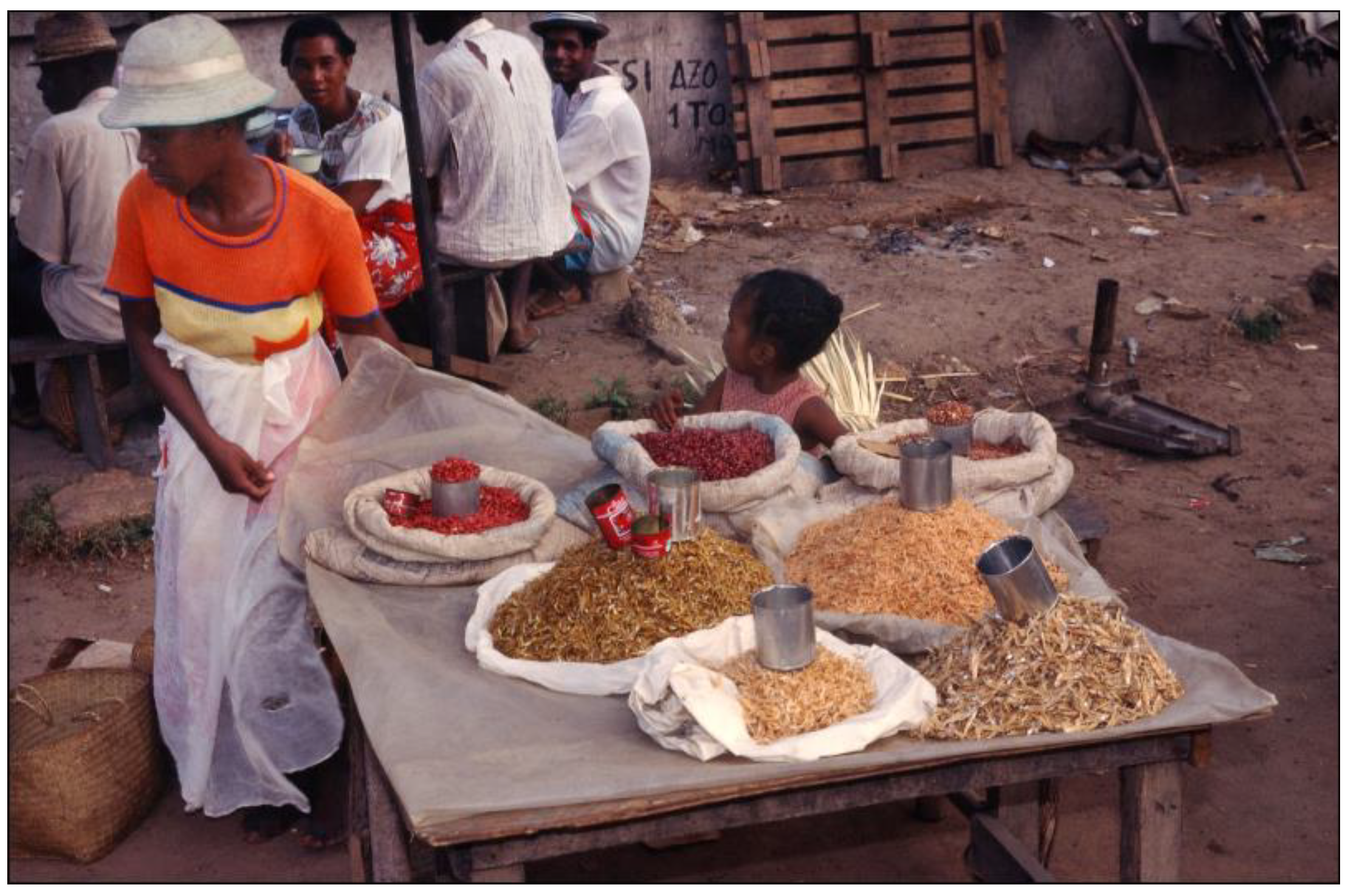
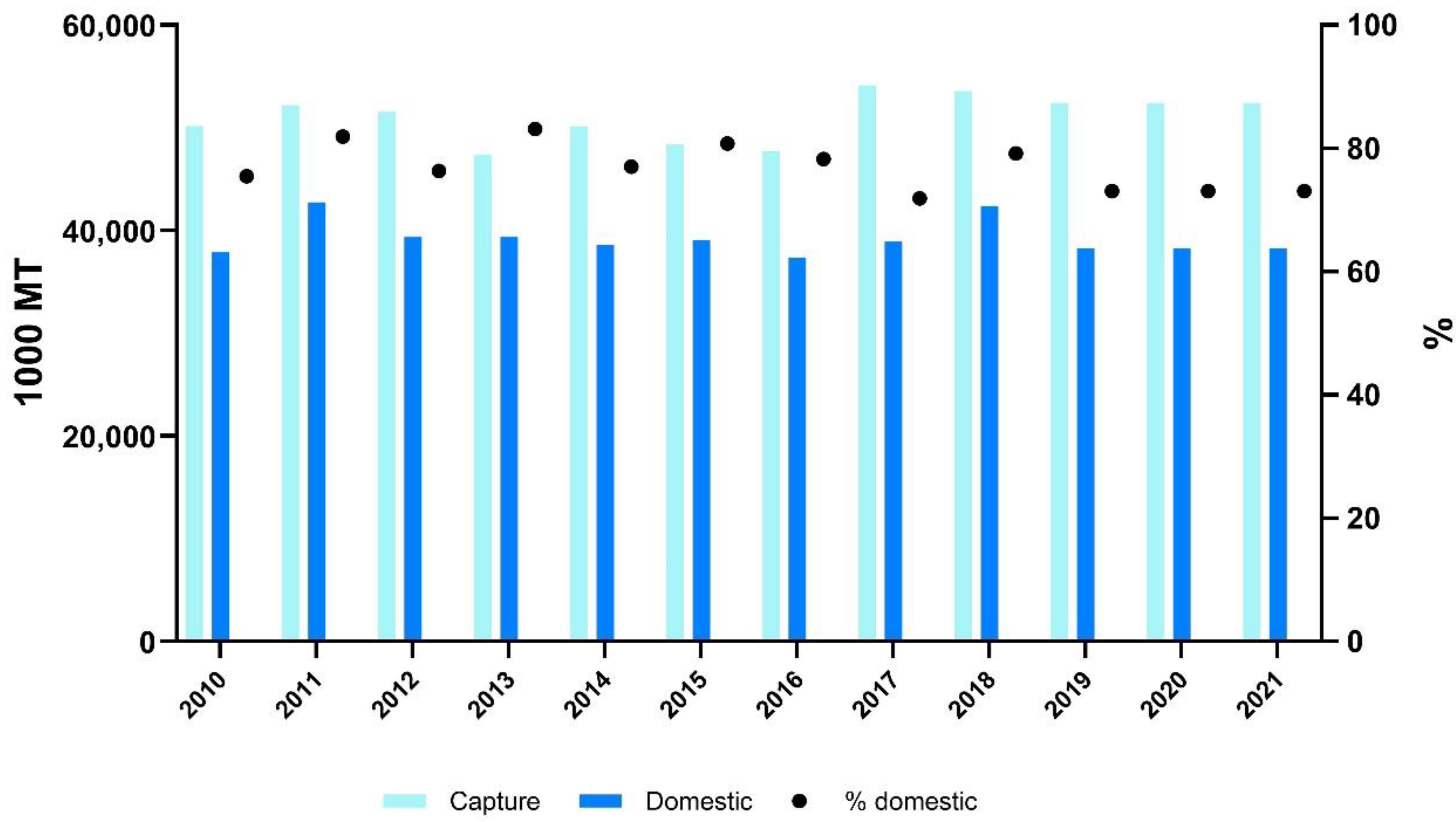
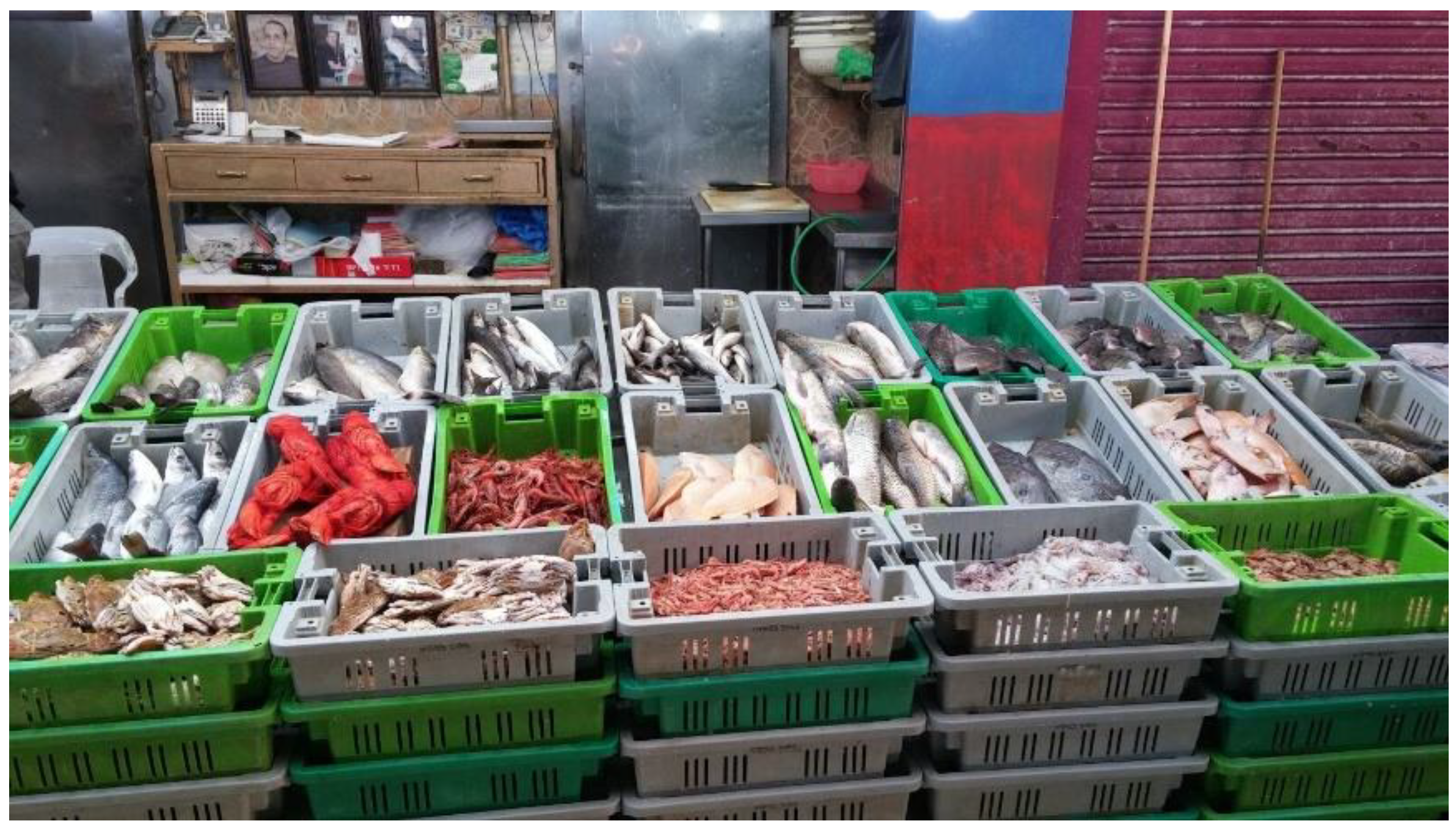
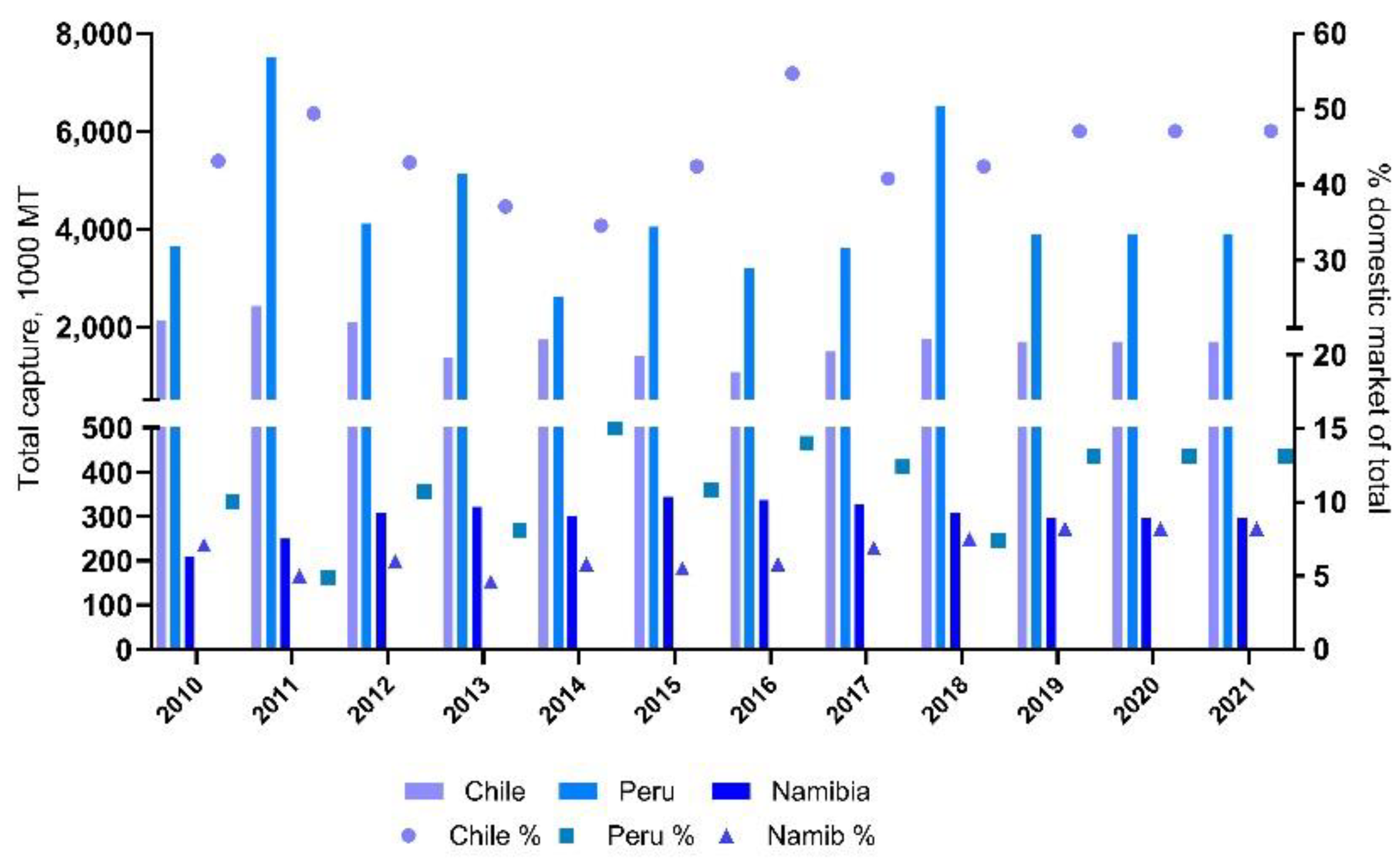
| Country | Base market supply MT. | Base price刘US$ MT-1 | Base total刘US$ million | Boosted supply % | Boosted fish supply MT. | Price flexibility, quantity: price | Reduced price刘US$ MT-1 | Boosted total columns 6 x 8 刘US$ million | Specific subsidy columns 3 minus 8 US$ MT-1 | Hypothetical family levy-subsidy US$ y-1* | Total national subsidy, columns 2 x 10 million US$ y-1 |
|---|---|---|---|---|---|---|---|---|---|---|---|
| 1 | 2 | 3 | 4 | 5 | 6 | 7 | 8 | 9 | 10 | 11 | 12 |
| 1 Global | 5,000,000 | 780 | 39,000 | 10 | 5,500,000 | 1:1 | 702 | 38,600 | 78 | 1.17 a | 390 |
| 2 South Africa | 204,700 | 1,000 | 204.7 | 10 | 225,000 | 1:1 | 900 | 202.6 | 100 | 1.5 b | 20.5 |
| 3 Senegal a | 135,000 | 216 | 29.17 | 37.5 | 216,000 | 1:1 | 135 | 29.16 | 81 | 3.65 c | 10.9 |
| 4 Senegal b | 135,000 | 216 | 29.17 | 10 | 148,500 | 1:1 | 194.4 | 28.867 | 21.6 | 0.97 c | 2.9 |
| 5 Istanbul, Turkey | 100,000 | 767 | 76.7 | 10 | 110,000 | 1:1.5 | 652 | 71.7 | 115 | 3.9 d | 11.5 |
| 6 Peru forage fish | 240,000 | 1,000 | 240 | 10 | 264,000 | 1:1 | 900 | 237.6 | 100 | 1.5 e | 24 |
| 7 Peru Mackerel | 220,000 | 1,000 | 220 | 10 | 242,000 | 1:1 | 900 | 218 | 100 | 3.15 f | 22 |
Disclaimer/Publisher’s Note: The statements, opinions and data contained in all publications are solely those of the individual author(s) and contributor(s) and not of MDPI and/or the editor(s). MDPI and/or the editor(s) disclaim responsibility for any injury to people or property resulting from any ideas, methods, instructions or products referred to in the content. |
© 2024 by the authors. Licensee MDPI, Basel, Switzerland. This article is an open access article distributed under the terms and conditions of the Creative Commons Attribution (CC BY) license (https://creativecommons.org/licenses/by/4.0/).




